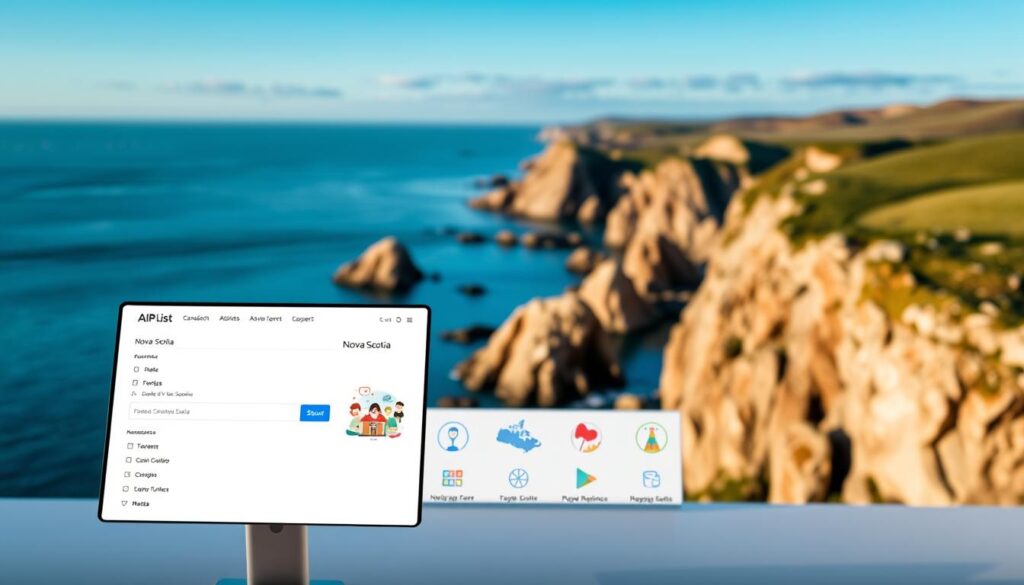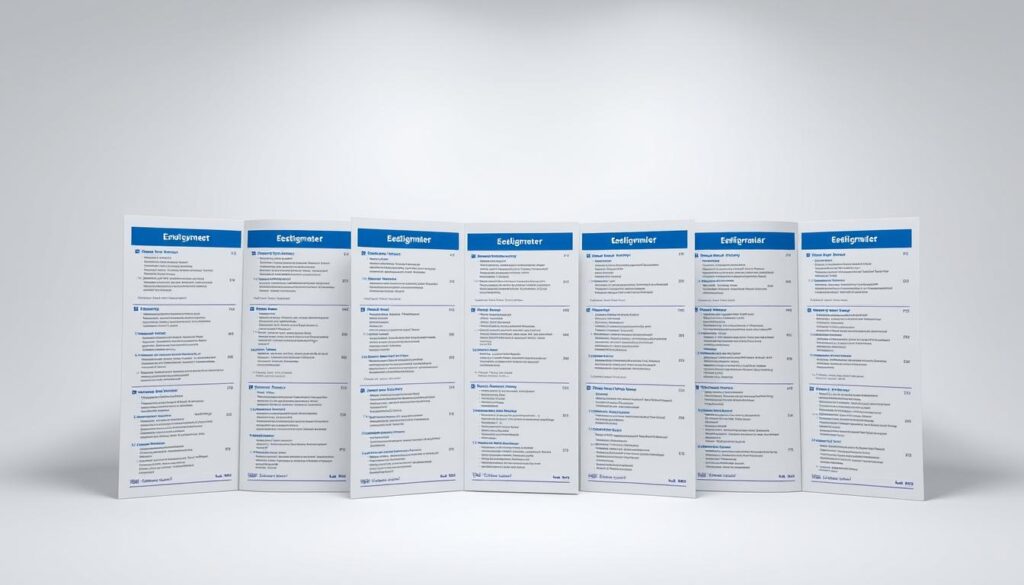Over 5,000 skilled workers chose Nova Scotia through the Atlantic Immigration Program last year alone. This surge highlights the province’s growing role as a hub for talent seeking opportunities in Canada’s Maritimes.
Starting May 2025, streamlined online systems will reshape how employers and applicants connect. The updated process prioritizes efficiency, linking qualified candidates with regional labour needs faster than ever before.
Designated employers play a critical role in this ecosystem. They bridge gaps in key industries like healthcare and technology while offering newcomers clear pathways to permanent residency.
Key Takeaways
- Nova Scotia’s immigration system now uses digital tools to accelerate applications
- Local businesses directly recruit international talent through approved partnerships
- Permanent residency becomes accessible through employer endorsements
- Atlantic Canada’s labour market needs guide program priorities
- New online portals simplify document submission and tracking
This program benefits both communities and newcomers. You’ll discover how alignment between provincial objectives and federal immigration frameworks creates win-win scenarios across Atlantic Canada.
Introduction to the Atlantic Immigration Program
With its robust economy and high quality of life, Canada remains a top choice for global talent. The Atlantic Immigration Program bridges regional workforce gaps while offering skilled workers a direct route to permanent residency. This initiative specifically targets professions needed in key industries, creating opportunities for both employers and newcomers.
Why Canada Is a Top Destination
Canada ranks among the world’s most immigrant-friendly nations, blending economic stability with cultural diversity. Over 85% of newcomers report satisfaction with their decision to move here, citing accessible healthcare and strong community support.

In regions like Nova Scotia, you’ll find thriving tech sectors and maritime industries actively seeking international expertise. The country’s emphasis on work-life balance and inclusive policies makes it ideal for building long-term careers.
Overview of the Visa and Application Process
This immigration pilot streamlines approvals through employer partnerships. Designated businesses in Atlantic Canada first identify unfilled positions and recruit qualified candidates. You then receive a job offer and settlement plan before applying via the Canada Visa Portal.
Most applications process within six months—significantly faster than traditional routes. Key requirements include:
- A valid job offer from an approved employer
- Language proficiency test results
- Educational credential assessments
Since its launch, this pilot has helped address critical labour shortages while giving skilled workers predictable timelines. Nova Scotia offers competitive salaries and affordable living costs, making transitions smoother for newcomers.
Discovering the AIP List Nova Scotia Portal
Navigating employment opportunities in Atlantic Canada just became simpler with the province’s dedicated employer portal. This tool connects skilled workers with designated employers approved to hire through regional immigration pathways. While the database doesn’t show active job postings, it reveals which businesses meet strict program requirements.

Use the portal’s search features to filter employers by industry, location, or company size. You’ll find organizations in healthcare, technology, and maritime trades actively participating in the program. Cross-check these results with provincial job boards like Explore Careers Nova Scotia for current openings.
Designation means employers have met specific criteria to support newcomers. They must:
- Advertise vacancies publicly
- Provide settlement support services
- Offer positions matching regional labour needs
Always verify if listed companies are actively hiring through their websites or recruitment platforms. The portal serves as a starting point—combine it with direct outreach for better results. This approach helps you target opportunities aligning with both your skills and the province’s economic priorities.
Navigating the Canada Visa Portal for Your Application
Canada’s immigration process enters a new era on May 1, 2025, with upgraded digital tools reshaping how you submit applications. The revamped portal replaces paper-based workflows, offering real-time updates and automated error checks. This shift aligns with Nova Scotia’s focus on attracting skilled workers through efficient systems.

Step-by-Step Guidance
Begin by creating your secure profile using government-issued identification. The system guides you through three phases:
- Uploading education certificates and language test results
- Connecting with approved employers through direct messaging
- Submitting final documents for provincial endorsement
Automatic reminders notify you about pending tasks or missing files. Always double-check document formats before uploading—PDFs under 4MB work best.
Key Features of the Online System
The portal’s dashboard displays application progress through color-coded stages. Employers receive instant notifications when you complete profile sections needing their input. Security features include two-factor authentication and encrypted data storage.
For Nova Scotia applicants, provincial requirements appear as pop-up tips during form completion. Use the live chat feature weekdays from 8 AM to 4 PM AT for urgent queries. These tools help maintain momentum throughout your immigration journey.
Understanding the New Online Systems and Program Updates
Digital transformation reshapes immigration pathways as Nova Scotia adopts upgraded processing systems. Starting May 1, 2025, endorsement applications shift entirely to a unified platform designed to reduce delays. This change follows July 2024 updates to provincial streams like NSNP 100 and NSNP 50, aligning them with federal standards.

Transition of the Endorsement Process
The new platform merges employer submissions with candidate profiles, creating a single workflow. You’ll notice three key improvements:
- Real-time status tracking replaces email updates
- Auto-filled forms using existing application data
- Integrated language test verification
Applications started before May 1 will transfer automatically if documents meet current standards. Provincial staff offer free webinars through June 2025 to help users adapt. One employer participant noted: “The dashboard shows exactly where bottlenecks occur, letting us fix issues immediately.”
| Feature | Previous System | 2025 Update |
|---|---|---|
| Processing Time | 8-12 weeks | 4-6 weeks |
| Document Uploads | Manual per section | Bulk upload + AI sorting |
| Employer-Candidate Chat | External platforms | Secure in-system messaging |
These changes position Nova Scotia as a leader in Canada’s immigration pilot programs. The province now processes 40% more applications monthly while maintaining rigorous quality checks.
Eligibility Requirements for the Atlantic Immigration Program
Qualifying for this immigration pilot requires meeting four pillars of eligibility. You must secure a job offer from an approved employer in the region, prove language proficiency, and demonstrate relevant work experience. Financial stability checks ensure you can support dependents during your transition.
Education verification starts with credential assessments through designated organizations like WES. For technical roles, diplomas or trade certifications must match Nova Scotia’s occupational standards. Language tests (IELTS/CELPIP) require minimum CLB 5 scores for most positions—higher thresholds apply for healthcare roles.
Work experience needs documentation through:
- Employment reference letters showing 1,560+ hours
- Pay stubs or tax filings as proof
- Skill alignment with provincial labour market needs
Financial requirements vary by family size. A single applicant needs $13,310 CAD, while a family of four requires $24,733. Acceptable proofs include bank statements or employer-signed settlement plans.
“Applicants often underestimate the importance of document formatting. PDFs must show clear dates and official stamps,” notes a Halifax immigration officer.
Final steps involve medical exams and police certificates. Use the Canada Visa Portal to upload these after receiving your employer endorsement. The system flags incomplete files instantly, letting you fix issues before submission.
Insights into Designated Employers and the Service Directory
The bridge between international talent and regional opportunities lies in Nova Scotia’s curated employer network. Through the Canada Visa Portal, you access verified organizations committed to supporting newcomers’ transitions while addressing local workforce needs.

Spotlight on Nova Scotia Employers
Approved companies range from boutique hospitality businesses like The Knot Pub to established manufacturers. These employers undergo rigorous screening to ensure they provide fair wages, settlement assistance, and growth opportunities.
Key industries include:
- Healthcare: Clinics needing specialized nurses
- Technology: Startups seeking software developers
- Hospitality: Hotels requiring skilled managers
Using the Employer List Effectively
Cross-reference the service directory with provincial job boards to identify active openings. Focus on companies matching your qualifications—a Halifax hotel manager notes: “We prioritize applicants who research our sustainability initiatives.”
| Industry | Employer Example | Key Features |
|---|---|---|
| Healthcare | Regional Medical Center | Sponsorship for licensing exams |
| Manufacturing | 1784603 Nova Scotia Ltd. | Skills upgrade programs |
| Tech | 1445913 Ontario Inc. | Remote work options |
Always verify employer designations through the portal’s search filters. This ensures you target organizations with proven immigration support services and stable hiring practices.
Exploring the “aip list nova scotia” for Visa Applications
Strategic employer matching accelerates your Canadian immigration journey through integrated digital tools. The Canada Visa Portal now syncs with provincial business registries, helping you identify opportunities in sectors like food service, healthcare, and advanced manufacturing. Companies operating as Nova Scotia Ltd. dominate hospitality and professional services, offering structured pathways for skilled workers.
Filter employers by region and specialization using the portal’s dropdown menus. Cross-reference these results with quarterly employment reports from Statistics Canada to target high-demand roles. A Dartmouth hiring manager notes: “Applicants researching our sustainability initiatives often secure interviews faster.”
Confirm employer legitimacy through their immigration program participation history. Established Nova Scotia Ltd. businesses frequently provide relocation assistance and credential recognition support. Subscribe to provincial newsletters for real-time updates on newly designated employers—critical for timing your applications effectively.
Introduction to the Pictou County RCIP Initiative
Rural communities in Canada’s Maritimes gain new growth engines through targeted immigration pathways. The Pictou County Partnership leads one of 18 regional initiatives under Canada’s Rural Community Immigration Pilot (RCIP). This program strengthens smaller towns by connecting employers with global talent ready to fill critical roles.
Unlike broader provincial programs, RCIP focuses on hyper-local needs. Municipal partners include Pictou Landing First Nation and six towns across the county. Together, they address shortages in sectors vital to rural economies.
What Is the Rural Community Immigration Pilot?
The RCIP operates alongside national immigration streams but adds unique community integration requirements. Employers must partner with economic development organizations to create “settlement through belonging” plans. A local business owner explains: “We don’t just fill jobs—we build relationships that help newcomers thrive.”
Priority sectors for 2025 applicants include:
- Healthcare and social services
- Skilled trades and manufacturing
- Transportation and equipment operations
First intake for employer recommendations runs July 14-25, 2024. Approved businesses gain access to the Canada Visa Portal‘s dedicated RCIP channel. This streamlined process helps rural enterprises compete for talent while maintaining the region’s distinct character.
Employer Designation and Registration Guidelines
Businesses seeking to hire international talent in Atlantic Canada must navigate specific certification processes. The Canada Visa Portal streamlines employer applications, ensuring compliance with provincial labour standards and immigration objectives. This system maintains program integrity while addressing workforce gaps in communities like New Glasgow.
Steps for Becoming a Designated Employer
First, complete free online training modules covering Canada’s immigration framework. Employers then submit proof of local recruitment efforts through job boards or industry networks. A Labour Standards officer notes: “Documentation must show dates, applicant responses, and reasons for not hiring domestically.”
Key requirements include:
| Step | Documentation | Timeline |
|---|---|---|
| Training Completion | Certificates for onboarding & intercultural courses | 2-3 weeks |
| ERC Application | Business license, financial statements | 4-6 weeks |
| Job Posting Proof | Ad screenshots, applicant logs | Minimum 30 days |
In Pictou County, employers must also partner with local settlement agencies. This ensures newcomers access housing support and language services. Ongoing obligations include quarterly reports on employee retention and workplace integration efforts.
Designated businesses gain priority access to provincial immigration streams. The portal’s employer dashboard tracks application status and renewal deadlines, simplifying compliance management for growing enterprises.
Understanding Candidate Pathways in Atlantic Immigration
Your journey through Atlantic Canada’s immigration pathways hinges on thorough preparation. Proper documentation serves as the foundation for successful applications, connecting skilled workers with regional opportunities efficiently.
Essential Documents and Submission Strategies
Gather employment reference letters showing at least 1,560 work hours—equivalent to one year full-time. Language test results must come from approved providers like IELTS, with scores meeting CLB 5 minimums. Always request educational assessments through designated agencies before submitting.
Organize files using the Canada Visa Portal’s naming conventions: “LastName_DocType_Date”. This prevents processing delays. Designated employers often provide template letters to ensure all required details appear clearly.
Double-check settlement plans with your prospective employer. These should outline housing assistance, community orientation, and any financial support offered. Missing elements here account for 23% of delayed approvals according to 2024 immigration reports.
Use the portal’s preview feature before final submission. This lets you spot formatting issues or missing signatures. Many applicants save time by completing medical exams and police certificates early—both remain valid for six months.



